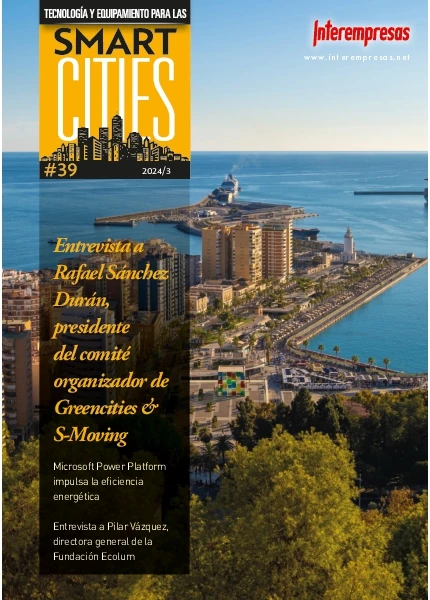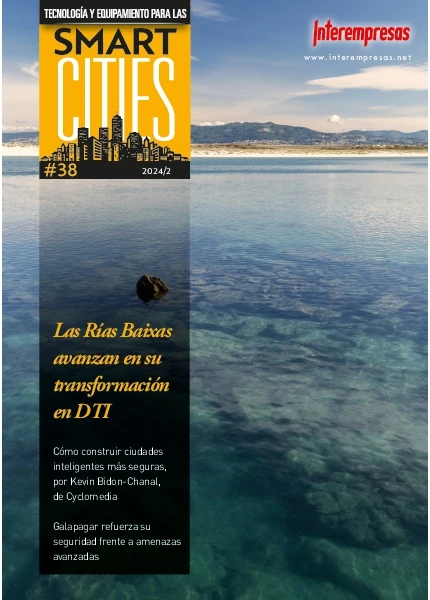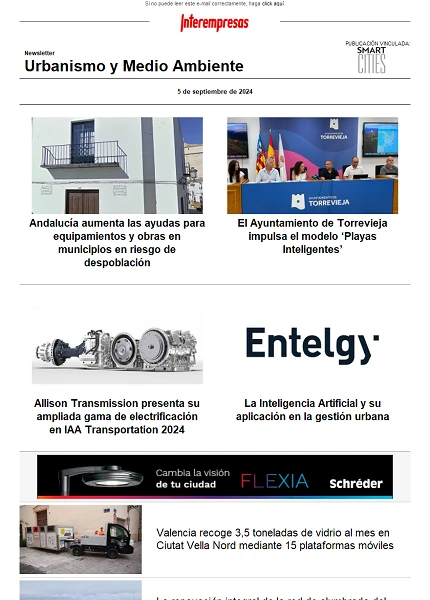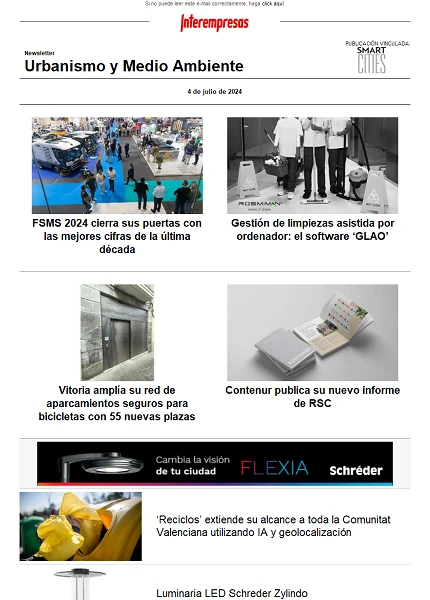La carretera, en el punto de mira del Gobierno
14 de marzo de 2011
La Asociación Española de la Carretera recuerda que las carreteras son esenciales para el bienestar económico y social. Y se han revelado en otros momentos críticos de nuestra historia reciente como infraestructuras determinantes para superar dificultades económicas de gravedad.
La AEC recuerda también que, pese a los esfuerzos del Gobierno por cambiar esta tendencia, por carretera se sigue transportando el 90% de los viajeros y el 85% de las mercancías, ratios que responden a decisiones de movilidad adoptadas libremente por los usuarios.
Pese a todo ello, en el momento actual, las Carreteras se han convertido en el eje central de medidas que no sólo no benefician a este modo de transporte como tal, perjudicando, al tiempo, el camino hacia la recuperación económica, sino que podrían poner en riesgo las mejoras alcanzadas en materia de seguridad vial durante las últimas dos décadas.
Primero fue la construcción de nuevas obras de carreteras (con la reprogramación de 112 contratos y la rescisión de otros 27), más tarde la conservación de las infraestructuras viarias existentes (especialmente de sus firmes, a cuyo mantenimiento no se ha destinado un solo euro en 2010), y ahora le ha llegado el turno al equipamiento, modificando los límites genéricos de circulación de forma contradictoria o planteando la reducción de la iluminación de las vías.
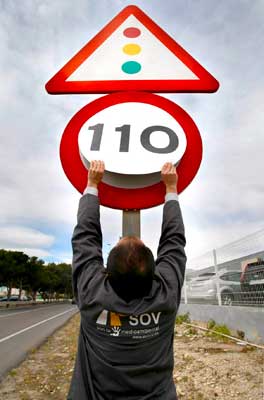
Contradicciones
Tras la celebración en Córdoba del 2º Encuentro de Ciudades para la Seguridad Vial los días 17 y 18 de febrero, la Dirección General de Tráfico anunciaba su intención de generalizar las Zonas 30 en las ciudades, “para adecuar la velocidad a las exigencias de seguridad de peatones y ciclistas”.
Una semana más tarde, el 25 de febrero, el Consejo de Ministros aprobaba un Real Decreto que modifica el Reglamento General de Circulación, estableciéndose el límite de velocidad máximo genérico en autovías y autopistas, para turismos y motocicletas, en 110 km/h. El objetivo: reducir el consumo de combustible ante la coyuntura internacional y la evolución al alza del precio del petróleo.
Ambas medidas, que pudieran parecer complementarias, son, sin embargo, contradictorias desde el punto de vista de eficiencia energética. En efecto, diversas investigaciones revelan que el consumo medio de un vehículo tiene una relación directa con el régimen de conducción, es decir, con las revoluciones que alcanza el motor durante el trayecto.
Datos extraídos del Proyecto Setismo* (Estudio del Sector Transporte en España. Desarrollo y Aplicación de Modelos de Análisis de las Condiciones para un Incremento Sostenible de la Movilidad), ponen de manifiesto que reducir la velocidad de 50 a 30 km/h incrementa el consumo de combustible en un 40% (de 58 a 80 g/km), en tanto que pasar de 120 a 110 km/h supone una disminución del consumo del 8% (de 63 a 58 g/km).
Otro cálculo interesante, que aportaría una visión global de la eficacia de la medida a punto de entrar en vigor en la red de alta capacidad española, pasa por estimar el coste económico que se derivará del aumento del tiempo invertido en los desplazamientos como consecuencia de la reducción de la velocidad genérica.
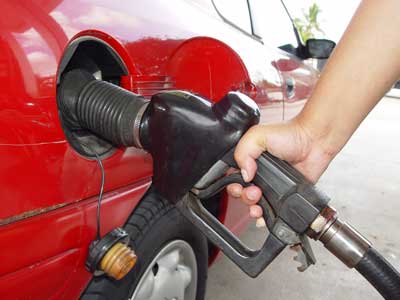
La Seguridad Vial, en riesgo
Esta misma semana, el Ejecutivo anunciaba su intención de aprobar un nuevo Plan de Ahorro Energético que afectaría a la iluminación de las vías. El Gobierno se plantea reducir costes energéticos disminuyendo en un 50% el consumo de energía eléctrica de las luminarias instaladas en la red viaria de titularidad estatal.
Dadas las implicaciones que una medida como ésta podría tener en la seguridad del tráfico, desde la Asociación Española de la Carretera nos felicitamos por las aclaraciones realizadas en el día de ayer por el Ministro de Fomento, José Blanco, en tanto en cuanto la intención del Gobierno no es eliminar ningún punto de luz en las carreteras sino sustituir las actuales luminarias por otras de bajo consumo.
Investigaciones desarrolladas por la Asociación Española de la Carretera en los años 90 revelan que la probabilidad de sufrir un accidente en condiciones de nocturnidad se multiplica por 2,43 respecto al día, aún teniendo en cuenta que, por la noche, desciende considerablemente el volumen de tráfico y se registran menos siniestros.
Así, en España, con un tráfico nocturno del 24,3%, el número de muertes por accidentes producidos durante la noche asciende a un 43%. A partir del ocaso, el riesgo de morir en un accidente de circulación se incrementa 3,10 veces en relación al día.
Desde la década de los setenta, se acepta de forma generalizada en el ámbito técnico que la iluminación de las carreteras reduce los accidentes con víctimas en un 20%, y en un 50% las muertes por siniestro de circulación, cifrando el ahorro anual derivado de la instalación de sistemas de iluminación en las vías en unos 390 millones de euros. Tomando como base esta cifra, iluminar la totalidad de la red del Estado representaría un coste de 1.600 millones de euros, inversión que quedaría amortizada en ocho años.
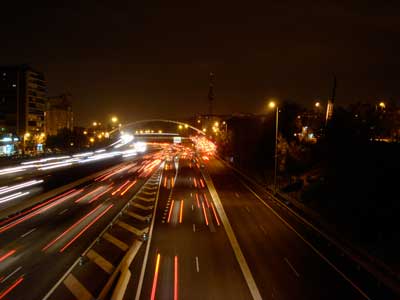
¿Y qué será lo próximo?
Quizá apagar los sistemas de extracción de humos de los túneles o eliminar los sistemas telemáticos de información en ruta… “La Asociación Española de la Carretera ha pasado de la decepción a la estupefacción”, afirman, en un momento en el que las infraestructuras viarias parecen haberse convertido en responsables de la crítica situación económica que atraviesa España.
La actual política estatal de transportes -que afecta de forma exclusiva al modo viario, ¿acaso los otros modos no consumen energía?- pone en riesgo los esfuerzos que el conjunto de la sociedad española ha realizado en las dos últimas décadas para dotarse de una red de infraestructuras de carreteras moderna, eficiente, eficaz, respetuosa con el medio ambiente y, sobre todo, segura.

